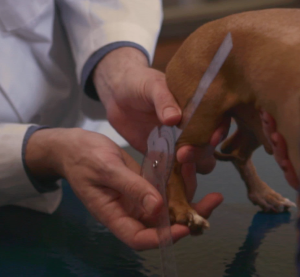Welcome back to the Companion Animal Health Regenerative Medicine blog series! In today’s blog, we are going to answer three of the most frequently asked questions regarding Platelet Rich Plasma. From protocols to assessing treatment response, we will provide clarity to some of the questions surrounding this ground-breaking therapy.
Question 1: Is there any proof that Platelet Rich Plasma therapy works?
This is a very common question as there are numerous sources of information regarding the efficacy of PRP treatments. A google search will provide different answers to PRP treatments and applications, though many may not be scientifically backed or peer-reviewed (the gold standard of validating a therapy). The number one place to look for efficacy data is the pubmed.gov website. Performing a search on this website will provide the latest peer-reviewed publications which investigate efficacy (or failure) of different treatments. We have provided several of these published papers for your review, which discuss the successful treatments utilizing Platelet Rich Plasma in numerous indications and may be accessed here.
Question 2: How soon after injecting Platelet Rich Plasma do you typically see results?
It is generally accepted both in human and veterinary medicine that positive effects of this therapy will become apparent within 5-10 days post treatment.
Question 3: How do I know if the patient is responding to treatment?
There are several considerations that need to be made when trying to decipher if a patient is responding to treatment. It is important to have a method for measuring a baseline of the patient and their response to a treatment. Many practitioners using Platelet Rich Plasma therapy will have patients return to the hospital 2 weeks post-treatment and will utilize on of the following methods to measure response.
- Canine Brief Pain Survey for Pet Owners – Created by the University of Pennsylvania, this survey asks the pet owner to grade their dog’s pain and general habits which may indicate improvement from the treatment. To access this survey (for free), click here.
- Pain Assessment/Palpation – Palpation is an extremely valuable tool when assessing a dog’s pain and locating the area of injury. Palpation can not only serve as a useful diagnostic, but can also provide feedback post treatment as to if the pain is still present or has reduced from its original state.

- Stance or Gait Analysis – Having a quantifiable measurement both pre-and post-treatment will provide you the best data for if a dog is improving from a therapy. Stance and Gait analysis provide objective measurements of the dog’s percent weight bearing on each of its limbs, center of gravity and stride length (gait analysis only).
- The Stance Analyzer is a cost-effective, compact system which can easily be integrated into a hospitals diagnostic program. Requiring a small foot print for floor space (approximately 2’ by 3’), the Stance Analyzer provides accurate readings of percent weight bearing, center of gravity and weight with a minimal time commitment. Once a reading is obtained, results are easy to interpret and can be saved for each patient to track responses to therapies.
- A gait analysis system typically consists of a 20-foot walkway mat which provides a detailed analysis of stride, locomotion and other advanced objective readouts. This too is a great system for quantifiable readouts, but requires additional space to perform correctly. These systems are more expensive than the Stance Analyzer and are typically utilized by universities performing research and specialty hospitals. Click here to read more about gait analysis systems.
- Gait videos – If you don’t have a stance analyzer or gait analysis but would like a visual comparison for pre- and post-treatment effects, you can use video to document your patient’s success! With the advancement of technology for smart phones, there are now applications and settings on the camera to take slow motion videos. These videos can enable you to point out changes in gait, stride length and head bobbing. They can also provide you with before and after videos to then market your regenerative treatments to your clients.
Stay tuned for our next blog where we will answer additional questions focused on Platelet Rich Plasma. If you have a question you would like answered, please contact Companion Animal Health at info@companiontherapies.com.





[...] the Companion Animal Health Regenerative Medicine blog series! In case you missed Part 1, you can read it here. In today’s blog, we are going to answer two more of the most frequently asked questions [...]